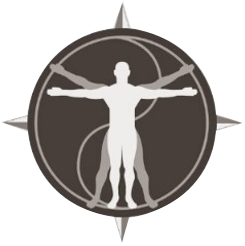Tendonitis – Causes, Symptoms, and Treatments

Tendonitis is a condition that affects the tendons, which are the connective structures between muscles and bones. Tendonitis can cause localized pain, edema, and stiffness. Tendonitis can sometimes progress to more serious consequences, such as tendon rupture. Tendonitis can occur in any part of the body and be caused by a variety of factors. This article will go over the causes, symptoms, and treatments for tendonitis.
What is Tendonitis, and What are its Causes?
Tendonitis is a condition that affects the tendons, the structures that link muscles to bones. Any of your tendons can develop tendinitis, but it most commonly affects your shoulders, elbows, wrists, knees, and heels. There are two types of tendinitis: acute (short-term) and chronic (long-term).
There are various tendinitis problems with different names. Some common names are Tennis elbow, Pitcher’s shoulder, Jumper’s knee, Swimmer’s shoulder, and Golfer’s elbow.
Tendonitis can be caused by overuse, injury, or infection of the affected area. Tendonitis is most typically caused by overuse (repetitive stress), but it can also occur in regions where calcium deposits have formed less frequently. Tendonitis is more common in persons in their forties and fifties.
Tendonitis is commonly caused by the following factors:
-
Making long durations of repeated activities, such as cutting or typing.
-
Having bad posture.
-
Wearing ill-fitting shoes.
-
Excessive physical activity.
What are the Symptoms of Tendonitis, and how is it Diagnosed?
There are numerous types of tendinitis, each with its own set of symptoms. Pain in the affected area is the most prevalent sign of tendonitis.
Tendinitis symptoms often develop at the area where a tendon joins to a bone and include A dull pain that gets worse while moving the injured limb or joint, Tenderness and Minor swelling
What are the Treatments for Tendonitis, and how long does it take to Recover from it?
There are numerous therapies available for tendonitis, and the optimal one for you will depend on the source and severity of your illness.
Among the most prevalent treatments are:
Rest: Tendinitis is an overuse injury. Resting the injured tendon causes the inflammation to subside.
Hot and Cold Therapy: An ice pack can decrease swelling in the affected area. Some people find it beneficial to alternate between heat and ice. They can take a heated bath or use hot towels or compresses.
If the condition worsens and the above-mentioned remedies do not work, you may need to seek more advanced treatment, such as:
Medications: OTC medications including Ibuprofen and other nonsteroidal anti-inflammatory medicines that can help with tendon discomfort and inflammation.
Therapy for the body: Physical treatment includes splinting and range of motion exercises (thumb, forearm, hands).
Surgical procedure: This is only used in the most severe cases where other treatments have failed.
How can you Prevent Tendonitis from Happening in the First Place?
There are many things you can do to prevent tendonitis from occurring. Some of these include:
Warm up before exercising: To prevent overuse injuries, it is important to warm up your muscles and tendons before exercising. This can be done by doing some light stretching or walking for a few minutes before starting your workout routine.
Cool down after exercising: Just as it is important to warm up your muscles before exercising, it is also important to cool down afterward. This can help reduce the risk of developing tendonitis. Cooling down can be done by doing some light stretching or walking for a few minutes after finishing your workout routine.
Wear proper shoes: Wearing shoes that provide good support and cushioning can help reduce the risk of developing tendonitis.
Avoid repetitive motions: Repeating the same motion over and over again can put a strain on your tendons and lead to tendonitis. If you must do a repetitive motion, take breaks often to give your tendons a rest.
Maintain good posture: Good posture helps reduce the strain on your tendons. Try to keep your back straight and your shoulders relaxed when you are standing, sitting, or walking.
In Summary
Tendonitis is a fairly frequent condition caused by overuse, injury, or infection. Pain in the affected area is the most prevalent sign of tendonitis. There are numerous treatments available for tendonitis, and the optimal one for you will depend on the source and severity of your illness. It is critical to see a doctor so that your issue can be properly diagnosed and treated.
More related information can be found here.

